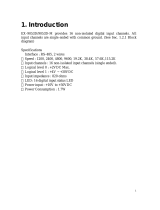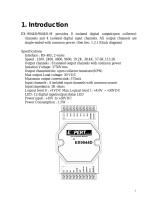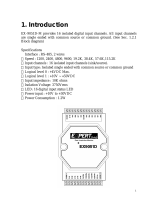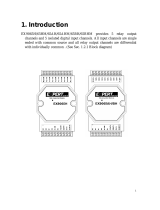
I-7088 and M-7088 User Manual, Rev: A1.5 7MH-026-A12
3
2.19. $AABR ................................................................................................61
2.20. $AACnD..............................................................................................63
2.21. $AACnD(Data) ....................................................................................65
2.22. $AACnF...............................................................................................67
2.23. $AACnF(Data).....................................................................................69
2.24. $AACnM..............................................................................................71
2.25. $AACnMS ...........................................................................................73
2.26. $AACnP ..............................................................................................75
2.27. $AACnP(Data) ....................................................................................77
2.28. $AACnT...............................................................................................79
2.29. $AACnTS............................................................................................81
2.30. $AACnN..............................................................................................83
2.31. $AACnNS............................................................................................85
2.32. $AAF...................................................................................................87
2.33. $AAI ....................................................................................................89
2.34. $AAM ..................................................................................................91
2.35. $AAP...................................................................................................93
2.36. $AAPN ................................................................................................95
2.37. $AAW..................................................................................................97
2.38. $AAYS.................................................................................................99
2.39. @AADODD.......................................................................................101
2.40. @AADI..............................................................................................103
2.41. @AAGN ............................................................................................ 105
2.42. @AAPN(Data)
...................................................................................107
2.43. ~AAD.................................................................................................109
2.44. ~AADVV
............................................................................................111
2.45. ~AAO(Name)..................................................................................... 113
2.46. ~AARD.............................................................................................. 115
2.47. ~AARDTT..........................................................................................117
2.48. ~**.....................................................................................................119
2.49. ~AA0................................................................................................. 120
2.50. ~AA1................................................................................................. 122
2.51. ~AA2................................................................................................. 124
2.52. ~AA3ETT...........................................................................................126
2.53. ~AAI.................................................................................................. 128
2.54. ~AATnn............................................................................................. 130

























